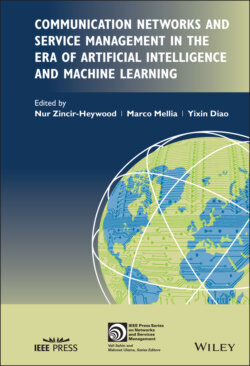Читать книгу Communication Networks and Service Management in the Era of Artificial Intelligence and Machine Learning - Группа авторов - Страница 25
1.3.1 Standard Configuration Protocols and Approaches
ОглавлениеThe NETCONF protocol is an example of a standard mechanisms that allow to install, manipulate, and delete the configuration of network devices [31]. It uses an XML‐based data encoding for the configuration data as well as the protocol messages. A key aspect of NETCONF is that it allows the functionality to closely mirror the native command‐line interface of the device. It provides a standard way for authentication, data integrity, and confidentiality. For this, it depends on the underlying transport protocol for this capability. For example, connections can be encrypted in TLS or SSH, depending on the device support. Along with NETCONF, a data modeling language defining the semantics of operational and configuration data, notifications, and operations has been defined via the introduction of the YANG modeling language [32]. Neither NETCONF nor YANG ever succeed in becoming an actual standard, given the difficulty to find a common and flexible ground that fits all requirements.
The Internet Engineering Task Force (IETF) defined a general policy framework for managing, sharing, and reusing policies in a vendor‐independent, interoperable, and scalable manner [33]. The Policy Core Information Model (PCIM) is an object‐oriented information model for representing policy information. It specifies two main architectural elements: the Policy Enforcement Point (PEP) and the Policy Decision Point (PDP). Policies allow an operator to specify how the network is to be configured and monitored by using a descriptive language. It allows the automation of management tasks, according to the requirements set out in the policy module. The IETF Policy Framework has been accepted by the industry as a standard‐based policy management approach and has been adopted by the third Generation Partnership Project (3GPP) standardization as well.
The Common Open Policy Service (COPS) is a protocol that provides a client/server model to support policy control. The COPS specification is independent of the type of policy being provisioned (QoS, security, etc.) but focuses on the mechanisms and conventions used to distribute information between PDPs and PEPs. COPS has never been widely deployed because operators found its use of binary messages complicates the development of automated scripts for simple configuration management tasks.
